 SYNOPSIS:
SYNOPSIS:
“Doctor Meacham is chosen along with others by the inhabitants of the planet Metaluna to do research that will help save their dying planet. However, an evil scheme is uncovered by the suspecting Meacham when he discovers the Metalunan’s plan to take over Earth. Meacham then escapes an exploding Metalunan-built Earth lab along with Doctor Adams only to be kidnapped while flying away in a small plane. A flying saucer whisks both the scientists off to Metaluna where they are held accountable for blowing up the Metalunan Earth lab during their escape. They later escape there with the help of Exeter the friendly Metalunan. Metaluna then self destructs and the doctors make it safely back to Earth, which is saved from Metalunan invasion.” (courtesy IMDB)
REVIEW:
Midway through the fifties it seemed as if the Hollywood science fiction film was about develop in an interesting new way with two new films: This Island Earth (1955) and Forbidden Planet (1956). Both contained all the ingredients of the magazine Space Opera (intergalactic adventures, dead or dying alien civilisations, vast incredible machines, super-science, etc.), a genre that had been popular with readers since the thirties but until then hadn’t really been transferred to the screen. However, because of the need for plenty of special effects and elaborate sets, both films were extremely expensive to produce and, although they proved financially successful, they weren’t profitable enough to persuade other film companies to invest large amounts of money into similar films. So this development came to an end before it properly got started, and didn’t surface again until the seventies.
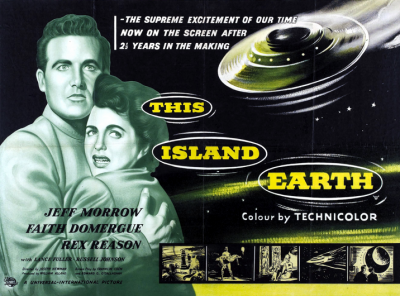 After 1956, the Hollywood science fiction product for the most part took a major nose-dive in quality, and the same period saw the takeover of the genre by the exploitation producers, who desperately began to wring all the dollars they could out the apparently fading science fiction boom by making films as cheap and sensational as possible. It was a time when filmmakers like Roger Corman, Bert I. Gordon and Herman Cohen flourished on relatively mindless productions, most of them made on tiny budgets. It was thanks to people like them that science fiction cinema developed a bad reputation that took several decades to shake-off.
After 1956, the Hollywood science fiction product for the most part took a major nose-dive in quality, and the same period saw the takeover of the genre by the exploitation producers, who desperately began to wring all the dollars they could out the apparently fading science fiction boom by making films as cheap and sensational as possible. It was a time when filmmakers like Roger Corman, Bert I. Gordon and Herman Cohen flourished on relatively mindless productions, most of them made on tiny budgets. It was thanks to people like them that science fiction cinema developed a bad reputation that took several decades to shake-off.
 Of the two big fifties Space Opera movies, Forbidden Planet is by far the best, having a superior story, screenplay, cast and special effects, but there’s no denying that This Island Earth possesses an absurd grandeur all its own. Produced at Universal by William Alland (who also produced Jack Arnold’s genre films), it was directed by Joseph Newman with a screenplay by Franklin Cohen and Edward O’Callaghan based on the novel by author Raymond F. Jones.
Of the two big fifties Space Opera movies, Forbidden Planet is by far the best, having a superior story, screenplay, cast and special effects, but there’s no denying that This Island Earth possesses an absurd grandeur all its own. Produced at Universal by William Alland (who also produced Jack Arnold’s genre films), it was directed by Joseph Newman with a screenplay by Franklin Cohen and Edward O’Callaghan based on the novel by author Raymond F. Jones.
 Rex Reason stars as scientist Cal Meacham who receives a mysterious package in the mail containing blueprints for some kind of electronic device. When he puts all the bits and pieces together, he ends up with a futuristic television set, the screen of which comes to life to show the face of a man with an unusually high forehead and white hair. The man informs Meacham that he has been selected, as a result of his ability to construct the device, to take part in a secret scientific project of great importance. A remote-controlled plane then takes the scientist to an isolated mansion where he finds a number of the world’s top scientists, including old college friend Doctor Ruth Adams (Faith Domergue) with whom he soon strikes up a tedious romantic relationship.
Rex Reason stars as scientist Cal Meacham who receives a mysterious package in the mail containing blueprints for some kind of electronic device. When he puts all the bits and pieces together, he ends up with a futuristic television set, the screen of which comes to life to show the face of a man with an unusually high forehead and white hair. The man informs Meacham that he has been selected, as a result of his ability to construct the device, to take part in a secret scientific project of great importance. A remote-controlled plane then takes the scientist to an isolated mansion where he finds a number of the world’s top scientists, including old college friend Doctor Ruth Adams (Faith Domergue) with whom he soon strikes up a tedious romantic relationship.
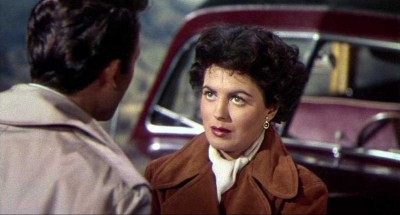 Meacham is introduced to Doctor Carlson, played by the most familiar face in the cast, Russell Johnson. His early roles were primarily in Westerns and genre films such as It Came From Outer Space (1953), Attack Of The Crab Monsters (1956) and The Space Children (1956). He appeared in two episodes of The Twilight Zone: In Back There he tries to prevent the assassination of Abraham Lincoln, and in Execution as a college professor. Johnson also appeared as a major on a US space station in The Outer Limits episode Specimen Unknown, but he’s really best known for playing Professor Roy Hinkley, the erudite polymath who could build all sorts of inventions out of the most rudimentary materials available on Gilligan’s Island but, as Johnson himself once told me, “He still couldn’t fix the hole in the goddamn boat!” But I digress.
Meacham is introduced to Doctor Carlson, played by the most familiar face in the cast, Russell Johnson. His early roles were primarily in Westerns and genre films such as It Came From Outer Space (1953), Attack Of The Crab Monsters (1956) and The Space Children (1956). He appeared in two episodes of The Twilight Zone: In Back There he tries to prevent the assassination of Abraham Lincoln, and in Execution as a college professor. Johnson also appeared as a major on a US space station in The Outer Limits episode Specimen Unknown, but he’s really best known for playing Professor Roy Hinkley, the erudite polymath who could build all sorts of inventions out of the most rudimentary materials available on Gilligan’s Island but, as Johnson himself once told me, “He still couldn’t fix the hole in the goddamn boat!” But I digress.
 Meacham also meets the man who brought him there, Exeter (Jeff Morrow) and his assistant Brack (Lance Fuller). Meacham, being a highly trained scientific observer, notices that Brack has the same high forehead and white hair as Exeter, and cleverly reasons that “There’s something strange about those two.” After a lengthy build-up, he and Doctor Adams find themselves on board a huge spaceship bound for the planet Metaluna, a world involved in the final stages of interplanetary war. Metaluna is nearing total defeat and in danger of being completely destroyed unless its defensive force-field can be maintained. Exeter and Brack had been sent to Earth to recruit fresh scientific talent, but by the time Meacham and Adams are brought to the planet it is already too late.
Meacham also meets the man who brought him there, Exeter (Jeff Morrow) and his assistant Brack (Lance Fuller). Meacham, being a highly trained scientific observer, notices that Brack has the same high forehead and white hair as Exeter, and cleverly reasons that “There’s something strange about those two.” After a lengthy build-up, he and Doctor Adams find themselves on board a huge spaceship bound for the planet Metaluna, a world involved in the final stages of interplanetary war. Metaluna is nearing total defeat and in danger of being completely destroyed unless its defensive force-field can be maintained. Exeter and Brack had been sent to Earth to recruit fresh scientific talent, but by the time Meacham and Adams are brought to the planet it is already too late.
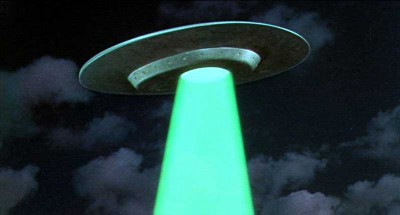 These sequences showing the huge flying saucer arriving at the ravaged planet, and the subsequent scenes of alien ships bombing the planet’s surface with giant meteors, are the most spectacular in the film. A psychedelic light-show impressive for its spectacular artificiality, created by a combination of model work, matte paintings and super-imposing, all the work of special effects artist Stanley Horsley and master cinematographer Clifford Stine.
These sequences showing the huge flying saucer arriving at the ravaged planet, and the subsequent scenes of alien ships bombing the planet’s surface with giant meteors, are the most spectacular in the film. A psychedelic light-show impressive for its spectacular artificiality, created by a combination of model work, matte paintings and super-imposing, all the work of special effects artist Stanley Horsley and master cinematographer Clifford Stine.
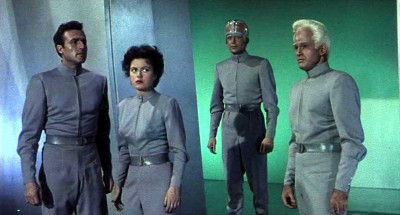 After the spaceship has landed, Meacham and Adams are taken to meet the ruler of the planet, a rather old Metalunan who tells them that the planet will soon be destroyed and that they are obliged to stay and share its fate. But as the force-field crumbles and the city begins to disintegrate, Exeter has a change of heart towards the two Earthlings and rushes them back to the spaceship. It takes off just in time to avoid being obliterated with the rest of the planet but with an unpleasant stowaway lurking below – one of a race of giant mutants created by the Metalunans to serve as their slaves. Although the mutant (actor Eddie Parker wearing a US$24,000 costume) manages to fatally wound him, Exeter succeeds in piloting the ship back to Earth. Meacham and Adams escape in a small plane and the dying Exeter then sends the spaceship on its final journey – a spectacular sweep over the ocean which ends with the flying saucer, trailing flames, crashing into the sea. Although not as memorable as Klaatu in The Day The Earth Stood Still (1951), Exeter is an interesting philosophical alien who learns the finer qualities of these puny humans.
After the spaceship has landed, Meacham and Adams are taken to meet the ruler of the planet, a rather old Metalunan who tells them that the planet will soon be destroyed and that they are obliged to stay and share its fate. But as the force-field crumbles and the city begins to disintegrate, Exeter has a change of heart towards the two Earthlings and rushes them back to the spaceship. It takes off just in time to avoid being obliterated with the rest of the planet but with an unpleasant stowaway lurking below – one of a race of giant mutants created by the Metalunans to serve as their slaves. Although the mutant (actor Eddie Parker wearing a US$24,000 costume) manages to fatally wound him, Exeter succeeds in piloting the ship back to Earth. Meacham and Adams escape in a small plane and the dying Exeter then sends the spaceship on its final journey – a spectacular sweep over the ocean which ends with the flying saucer, trailing flames, crashing into the sea. Although not as memorable as Klaatu in The Day The Earth Stood Still (1951), Exeter is an interesting philosophical alien who learns the finer qualities of these puny humans.
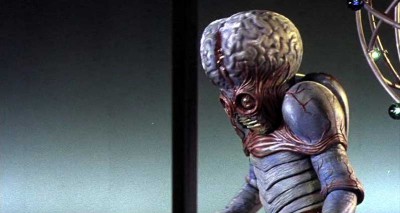 If there is a subtext to be found it is, as my old friend and fellow critic Philip Strick once told me, “There is so much nastiness out there in space we might be better off pursuing a policy of planetary isolationism.” So the logic of the film insists, but its exciting imagery tells a different story of wonder and garish colour. This Island Earth may be seriously handicapped by a poor screenplay and by a long delay before the action moves into outer space, but it’s saved by its truly amazing visuals. It deserves an important place in the history of the genre film for bringing to the screen for the first time familiar scenes that had previously only existed in the minds of science fiction pulp writers and the lurid imaginations of their readers. Forbidden Planet would do the same thing, as would 2001: A Space Odyssey (1968) and Star Wars IV: A New Hope (1977). It’s with this thought in mind I’ll politely ask you to please join me next week when I have the opportunity to throw you another bone of contention and harrow you to the marrow with another blood-curdling excursion through the Public Domain for…Horror News! Toodles!
If there is a subtext to be found it is, as my old friend and fellow critic Philip Strick once told me, “There is so much nastiness out there in space we might be better off pursuing a policy of planetary isolationism.” So the logic of the film insists, but its exciting imagery tells a different story of wonder and garish colour. This Island Earth may be seriously handicapped by a poor screenplay and by a long delay before the action moves into outer space, but it’s saved by its truly amazing visuals. It deserves an important place in the history of the genre film for bringing to the screen for the first time familiar scenes that had previously only existed in the minds of science fiction pulp writers and the lurid imaginations of their readers. Forbidden Planet would do the same thing, as would 2001: A Space Odyssey (1968) and Star Wars IV: A New Hope (1977). It’s with this thought in mind I’ll politely ask you to please join me next week when I have the opportunity to throw you another bone of contention and harrow you to the marrow with another blood-curdling excursion through the Public Domain for…Horror News! Toodles!
 Horror News | HNN Official Site | Horror Movies,Trailers, Reviews
Horror News | HNN Official Site | Horror Movies,Trailers, Reviews
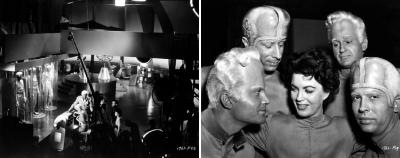
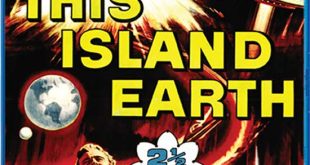

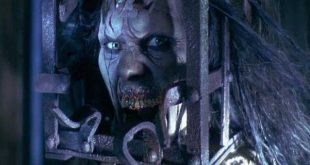
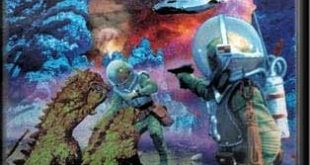
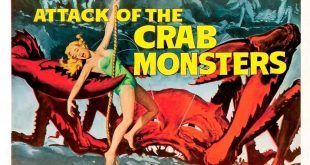
I love this f*cking movie! I think it’s been sadly overshadowed by films like “Forbidden Planet” & “War Of The Worlds” but it is most certainly in their league & deserves better than being mocked on MST3000.
This was the first interplanetary space film, and it’s terrific! It deserves great respect. In addition, it has Faith Domergue!
Thanks for reading! I don’t know about being ‘overshadowed’ by Forbidden Planet – I always considered them on equal par, being released about the same time, but two very different films of course. I love the MST3K version of This Island Earth, particularly after seeing the original on telly so many times, and the new print looks so crisp and clear!